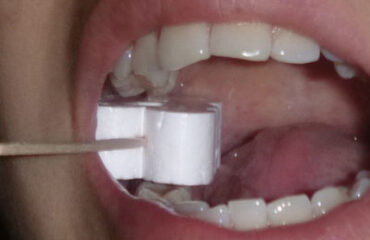Tongue thrust and oral cavity size
Surgery vs Orthodontic + Orofacial Myology Treatment
Some professionals feel that “tongue thrust” is a rare occurrence. I have heard that it is caused by oral cavities that are too small and these children should be considered as possible surgical clients rather than potential orthodontic patients.
I am seeing an increased number of referrals for kids who have had braces, then get them removed, then the teeth start moving back to the abnormality, and then the orthodontist refers to SLP for correct of the tongue thrust. I was told by an oral surgeon that the kids need bigger oral cavities to solve the problem. He said that the tongue movements would be solved from the increased room after surgery.
What are your thoughts along these lines?
Thanks
Thank you for writing about this important subject. Especially when surgery is being considered an option in lieu of orthodontic treatment and orofacial myology, I will defer this question to Dr. Robert Mason. Please see the following:
I know of no data to support this unusual perspective. What he contends is not compatible with available literature of perspectives about tongue thrusting and orofacial myofunctional disorders (OMD’s). To this end, I am attaching an update article that I wrote for the website www.SpeechPathology.com, and featured on the website during the month of February, 2009.
It is well known, or should be, that the tongue adapts to the space available. A case in point is the patient with a Class III skeletal mandible and a large-appearing tongue. When the mandible is surgically reduced/setback, the tongue adapts and appears smaller. This is well discussed in an article in the Journal of Oral Surgery, v. 30, 184-192 (1970) by Wickwire, White and Proffit. The position of the hyoid bone serves as a useful marker in evaluating the change in resting tongue posture following setback surgery. As well, there is a long history of orthodontic treatment involving the extraction of teeth, especially bicuspids without the subsequent development of thrusting. Extraction patients do not demonstrate a history characterized by the development of tongue thrusting as a result of the extractions.
The etiology of tongue thrusting during speech and swallowing has a link to unresolved airway issues and allergic rhinitis. So a thrust is a clinical sign that signals the need to evaluate the status of the posterior airway. For example, enlarged faucial tonsils can compete with the tongue for space, and a forward rest posture or even a thrust can serve as an adaptation of the tongue to maintain the integrity of the airway for breathing.
As the above-mentioned article explains, there is a difference between an anterior interdental rest posture of the tongue, and a thrust. Thrusting itself is now viewed as an adaptation to rather than a cause of malocclusion while an anterior rest posture has a strong link to the development of maintenance of some malocclusions. So although I am in agreement that open bites can lead to thrusting, this does not imply that the oral cavity is too small, but rather that the tongue can behave in an opportunistic manner when a space is made available.
Neo-Health Services, Inc. is an company that focuses on OMD’s, and has an educational and qualification (QOM) process for those who desire to work in this area. NHS also is a provider of continuing education for the professional organization ASHA. Having been active in the speciality of Orofacial Myology for many years, I am sensitive to the need for SLP’s to achieve specialized training with OMD’s prior to initiating therapy, as per the ASHA position statement on Knowledge and Skills with OMD’s passed in 1993. I encourage you to check out the website https://orofacialmyology.com for additional information about this interesting area.
I hope that the responses above will help you to resolve your questions. The idea that thrusters should be considered as candidates for possible jaw surgery does not have supporting data.
Dr. Robert Mason
Speech-Language Pathologist, CCC – ASHA Fellow. Professor of Orthodontics (retired). Department of Surgery, Duke University Medical Center

